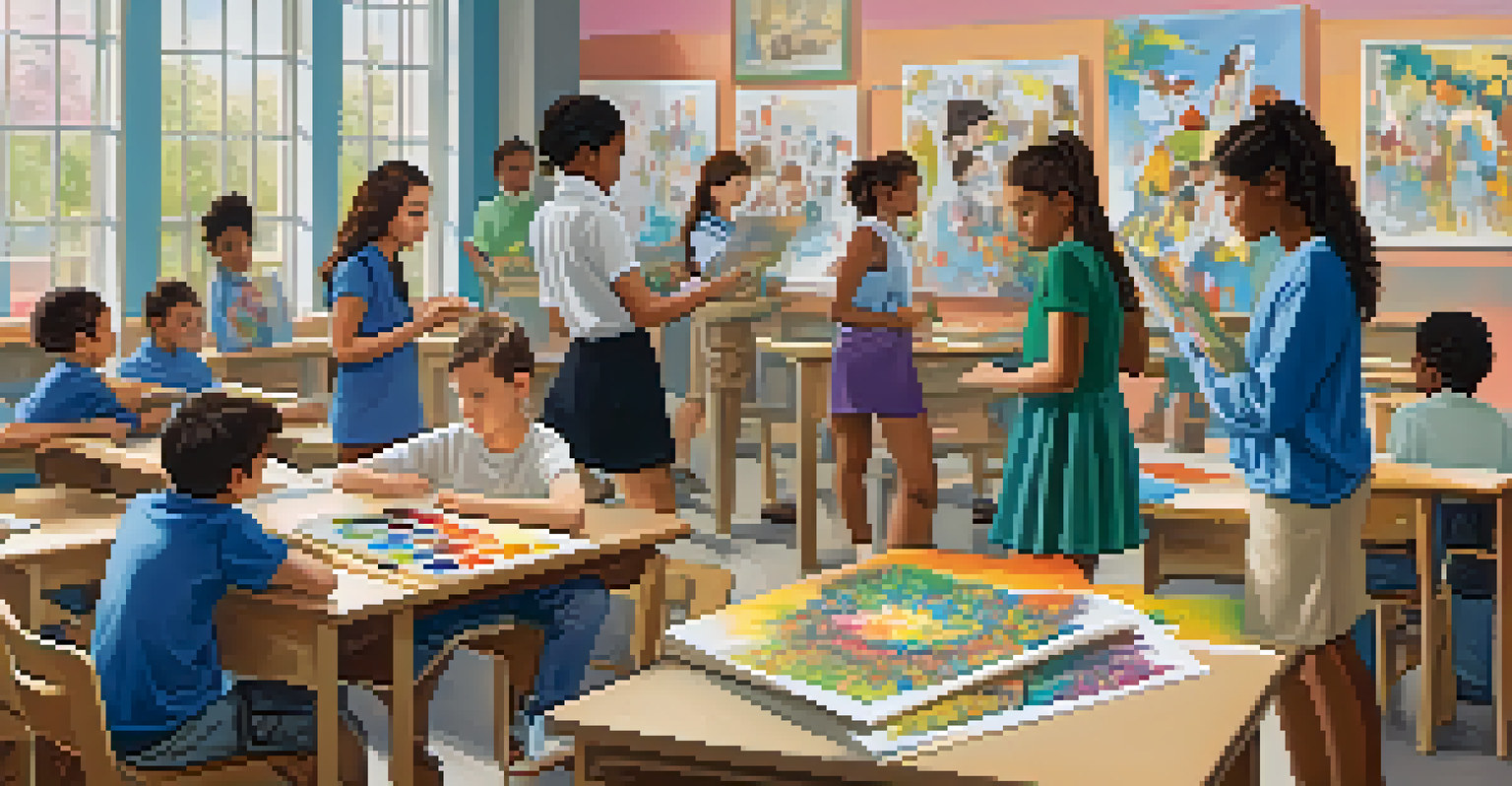Cultural Capital: Its Role in Accessing Art Education

What is Cultural Capital and Why It Matters
Cultural capital refers to the non-financial social assets that promote social mobility. This includes education, intellect, style of speech, and even dress. Understanding cultural capital is crucial because it often dictates who has access to opportunities, including art education.
Cultural capital is not just about money; it's about the skills, knowledge, and connections you have that open doors in life.
For instance, a child raised in a family that values art may be more likely to visit museums or attend art classes. These experiences contribute to their cultural capital, making them more comfortable in art-related environments. This comfort can lead to greater participation in art education programs.
In contrast, children from backgrounds with less exposure to the arts might find themselves at a disadvantage. Without this cultural capital, they may feel alienated in artistic settings, which can hinder their engagement in art education.
The Link Between Cultural Capital and Art Access
Access to art education often hinges on one’s cultural capital. Schools and programs that prioritize art education may unintentionally favor those who already possess a certain level of cultural capital. This can create an environment where only a select group feels welcome.

For example, a school that incorporates art history into its curriculum may resonate more with students who have been exposed to these concepts at home. Conversely, students without this background might struggle to connect with the material, limiting their overall engagement.
Cultural Capital Affects Access
Cultural capital influences who has access to art education opportunities, often favoring those from backgrounds that prioritize the arts.
This disparity highlights the importance of recognizing cultural capital in educational settings. By understanding these dynamics, educators can work to create more inclusive and accessible art education opportunities.
How Cultural Capital Influences Art Participation
Cultural capital not only affects access but also influences participation in art-related activities. Individuals from families that regularly engage with the arts are more likely to continue this tradition. They might participate in community art events, workshops, or even pursue careers in the arts.
Education is the most powerful weapon which you can use to change the world.
Take, for example, a student whose family frequently visits galleries and attends art shows. This exposure fosters a deeper appreciation and understanding of art, encouraging them to seek out similar experiences. As a result, they become more active participants in art education and community art initiatives.
On the flip side, those without this cultural background may shy away from participating, feeling out of place or unqualified. This can create a cycle where their lack of participation further limits their exposure and understanding of the arts.
The Role of Institutions in Addressing Cultural Capital
Art institutions and educational programs play a pivotal role in bridging the gap created by cultural capital disparities. By recognizing the unique barriers faced by underrepresented groups, these organizations can develop initiatives to foster inclusivity. This could involve offering scholarships, community outreach, or tailored programs that cater to diverse backgrounds.
For instance, a museum might host free workshops specifically designed for underserved communities. These programs can demystify art education and make it more accessible, allowing participants to build their own cultural capital.
Participation Linked to Background
Individuals with a strong cultural capital background are more likely to engage in art-related activities, perpetuating a cycle of involvement.
By actively working to address these disparities, institutions can help level the playing field, ensuring that everyone has the opportunity to engage with and benefit from art education.
Community Engagement as a Tool for Cultural Capital Growth
Community engagement is a powerful way to enhance cultural capital for individuals and families. Programs that bring art education directly into neighborhoods can help foster a love for the arts. This not only enriches individual lives but also strengthens community ties.
For example, a local art collective might offer free classes or workshops in public spaces, encouraging participation from all community members. This exposure can help cultivate a new generation of art enthusiasts, artists, and educated patrons.
Moreover, these community efforts can help dismantle the barriers associated with cultural capital, making art education more accessible and relevant to diverse populations.
The Importance of Mentorship in Art Education
Mentorship can significantly impact a student's journey in art education by providing guidance and support. A mentor with experience in the arts can help bridge the gap in cultural capital, providing insights and opportunities that may otherwise be inaccessible. This relationship can empower students to explore their artistic interests more confidently.
Consider a young artist who is paired with a mentor in their local art scene. This mentorship can open doors to galleries, exhibitions, and networks that the student might not have accessed alone. Such experiences can enhance their cultural capital, enriching their education and engagement with the arts.
Institutions Can Foster Inclusivity
Art institutions can bridge cultural capital gaps by creating initiatives that promote accessibility and inclusivity in art education.
By fostering these mentorship connections, we can create a more supportive environment for aspiring artists, ensuring that cultural capital does not become a barrier to their success.
Moving Forward: Strategies for Inclusive Art Education
To promote inclusivity in art education, it’s essential to adopt strategies that actively reduce barriers tied to cultural capital. This could involve developing diverse curricula that reflect a variety of cultures and artistic traditions. Such an approach ensures that all students see themselves represented in what they learn.
Additionally, offering flexible scheduling and financial assistance can help accommodate students from different backgrounds. By making art education accessible at various times and price points, we can reach a wider audience and enrich the overall artistic community.

Ultimately, fostering inclusivity in art education requires a concerted effort from educators, institutions, and communities alike. By working together, we can create an environment where everyone has the opportunity to thrive in the arts.